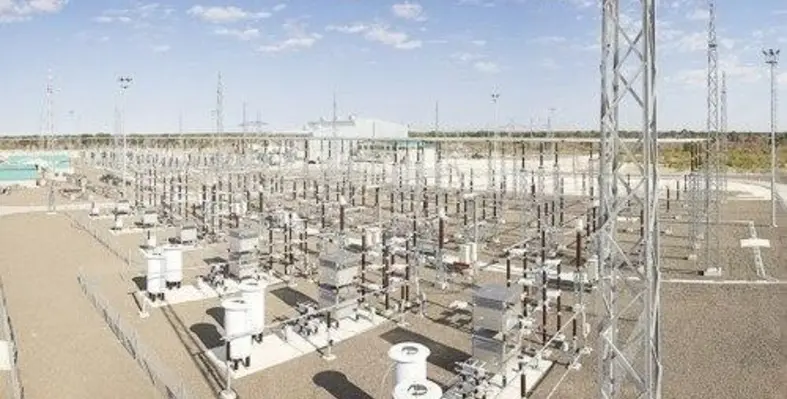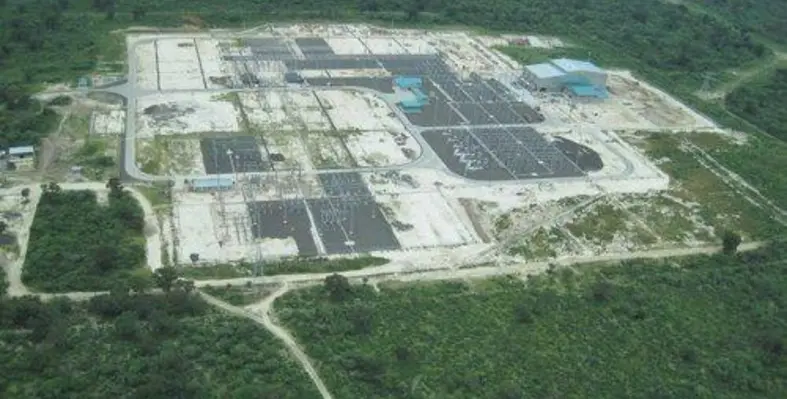Despite ambitious, co-ordinated, international plans to increase the region’s power generation capacity, progress is slow
Nowhere is this more clearly illustrated than in sub-Saharan Africa, where 590mn people do not have access to grid-connected electricity and electrification rates in the south are dismal. In contrast to Egypt’s installed capacity of 21 GW and electrification rate of 99.6 per cent, Uganda has a 300 MW base and a pathetic electrification rate of just 9 per cent.
Matters are coming to a head, as these nations are experiencing economic growth rates way ahead of the rest of the world. According to the Economist, seven out of the top ten fastest growing economies – Ethiopia, Mozambique, Tanzania, Congo, Ghana, Zambia and Nigeria – are located in sub-Saharan Africa. Much of the economic growth is being driven by mining, and mining needs power. Even in relatively prosperous nations, the high rate of growth means state utilities are constantly playing catch-up.
The vast, sparsely-populated, desert- and bush-infested nation of Namibia is a prime example. NamPower, the state power utility, is a tightly-run ship. It notched a profit of US$45mn in 2010 and, according to managing director, Paulinus Shilamba, Namibia is the only country in sub-Saharan Africa not to suffer from load shedding.
Yet the 100 per cent state owned power generation and distribution monopoly suffers a significant generation shortfall. NamPower is only 46 per cent self-sufficient in power generation, with imports accounting for the remaining 54 per cent, of which 22 per cent is supplied by South African state utility Eskom. Maximum demand is 511 MW, but capacity totals just 415.5 MW, including the 249 MW Ruacana hydro plant, the 120 MW Von Eck coal plant and two diesel-powered plants of a combined 66.5 MW. Furthermore, low water flow in the Kunene River at the Angolan border has impaired generation at Ruacana, while outages at Eskom’s Koeberg nuclear plant near Cape Town have left Namibia on the brink of blackouts.
Shilamba says Namibia’s power reserve margins will be squeezed perilously tight over the coming year, predicting a shortfall of 300 MW by 2015 as the country’s zinc, copper and uranium mining sectors continue to enjoy enviable growth. NamPower is due to commission an additional 92 MW unit at the Ruacana hydro plant in March and is conducting a feasibility study into an 80-120 MW hydro plant at Orange River, but it is desperate to build a baseload, fossil fuel power plant. Plans for a 300 MW coal plant in Walvis Bay have been rejected, however, while an ambitious plan to build the integrated Kudu gas-to-power project, involving a floating gas platform 170km offshore and an 800 MW CCGT in Oranjemund, requires US$2bn, equivalent to 15 per cent of GDP.
So, in need of a quick fix, NamPower turned to ABB. While technically not an interconnector due to the converter stations being located solely in one nation, the 950 km HVDC Caprivi Link runs along the curious, narrow Caprivi strip in extreme northeast Namibia. From the Zambezi substation, very close to the Zambian border in Katima Mulilo, the 300 MW line connects with the Gerus substation, 300km north of the capital Windhoek.
While technically not an interconnector due to the converter stations being located solely in Namibia, the +300 MW, 350kV Caprivi Link connects the Zambezi substation with the Gerus substation near Otjiwarongo, around 300 km north of the Namibian capital Windhoek. The link, for which construction began in March 2007, also connects to the 220 kV HVAC transmission line from the Victoria Falls in Zambia inaugurated in 2008.
 The aim of the Caprivi Link is to ensure reliable power transfer capability between the east and west of the Southern African Power Pool (SAPP). It is also the first electrical connection between the Caprivi region of Namibia and the rest of the country, and is able to supply power to the region if normal supplies from Zambia are disrupted. Larger islanded parts of the Namibian and Zambian grids can also be supplied by the link, which maintains frequency control and thereby avoids power outages.
The aim of the Caprivi Link is to ensure reliable power transfer capability between the east and west of the Southern African Power Pool (SAPP). It is also the first electrical connection between the Caprivi region of Namibia and the rest of the country, and is able to supply power to the region if normal supplies from Zambia are disrupted. Larger islanded parts of the Namibian and Zambian grids can also be supplied by the link, which maintains frequency control and thereby avoids power outages.
The Caprivi Link is somewhat of an oddity. Rather than opting for cheaper HVAC or traditional HVDC, NamPower opted to utilise ABB’s HDVC Light, the Swiss firm’s brand name for HVDC with voltage source correction (VSC). HVDC Light is usually the reserve of underground or subsea links of far shorter distances, and as such it is ABB’s first installation built with overhead lines. At 350 kV, it has also the highest operating voltage HVDC Light system and at 950 km, the longest system currently in operation.
Commissioned in June 2010, the Caprivi Link was jointly funded by NamPower, the European Investment Bank, the French Development Bank and the German Development Agency (KwF). Of the total US$391m cost, US$180mn was booked by ABB.
The decision to use HVDC Light was made because the AC networks connecting with the HVDC Light converter stations are extremely weak at both ends, with short-circuit power levels of around 300 MVA and long AC lines connecting to remote generation stations. As a result, the AC networks are exposed to a risk of 50 Hz resonance.
Instead of using traditional feedback active power control, frequency control, and power runback systems as installed in other HVDC Light projects such as the Finland-Estonia Estlink project, a direct voltage and frequency control is deployed via ABB’s turn-on/turn-off insulated gate bipolar transistors (IGBT) power semiconductors.
According to Manfred Manchen, NamPower’s director of power system studies, the basic insulation levels at 350 kV DC compare quite closely with those at 400 kV AC, with the result that the assembly configuration and insulators used for the project are identical to those specified for standard 400kV AC line designs. Without any feedback control loop, the HVDC Light system automatically changes the active power needed to keep power balance within the islanded grid so the frequency is stabilised, automatically changing the reactive power needed to keep the AC voltage at the desired level.
The VSC functionality has proved to be an effective tool to maintain grid stability, says Manchen. During commissioning of the link, an AC breaker failure occurred in the Zambian grid at a time when 50 MW was being exported from Zambia to Namibia, resulting in a frequency drop in the Zambia grid of 4 Hz.
The HVDC Light system identified the critical situation and quickly changed power flow from exporting 50 MW from the Zambezi substation to importing 60 MW from Gerus. Thanks to this action the Zambian grid frequency recovered immediately to 50 Hz and a blackout was avoided.
On an occasion when 80 MW was being exported from Namibia to Zambia, an overload protection tripped a 220 kV line in NamPower’s 220 kV buszone, which led to a sudden island condition in the Namibian grid. The sudden outage of the line led to a large frequency dip in the Namibian grid.
The Gerus substation immediately reduced the power exporting from 80 MW to almost zero and automatically switched from DC voltage control mode to voltage and frequency stabilisation control. The Zambezi substation then switched from tracking the power order to DC voltage control. About one second after the contingency, says Manchen, the Namibian grid had restored stable AC voltage in both frequency and magnitude.
The link has not been without problems. It has been plagued by rats, for which dozens of traps have been laid at both the Gerus and Zambezi substations. “They’ve taken a liking to the fibre-optic cable insulation,” explains Manchen. “They ate so much of it that we’ve had to use a different, less tasty type of cable. There are some things that you just can’t plan ahead for!”
Rodent issues aside, the link is not used to its full potential. Power flow is only one-way and the link significantly under-utilised. Due to the weakness of the AC grid in Zambia, only 50 MW is being transmitted, mostly hydropower from the Victoria Falls, representing just one-sixth of the link’s 300 MW capacity.c
The link is marketed as a key southern African interconnector, but that will only be true once Phase II is commissioned. Phase I, commissioned in 2010, is a +300 MW monopole link operated with parallel DC lines and earth return to reduce line losses.
Phase II would consist of upgrading the converter stations at Zambezi and Gerus substations to a ±600 MW bipole link with zero ground current. NamPower would also have to strengthen its AC grid via a 280 km, 400 kV line from Gerus to the Auas substation, which serves Windhoek.
NamPower is in negotiations with Eskom and Zambia to build Phase II, but the project has an indefinite timeline, and estimates put the commission date at 2016 at the earliest. Another key element of Phase II is the need for a 320 kV link between Zambia’s Victoria Falls and the Hwange coal plant in Zimbabwe, for which NamPower has invested in a US$40mn repowering in return for 150 MW of power capacity for five years.
The Caprivi Link will thus remain a useful tool to maintain grid stability and import Zambian power but, until Phase II is commissioned, its designated function as a two-way interconnector to facilitate power trading will be severely limited.
Tim Probert






